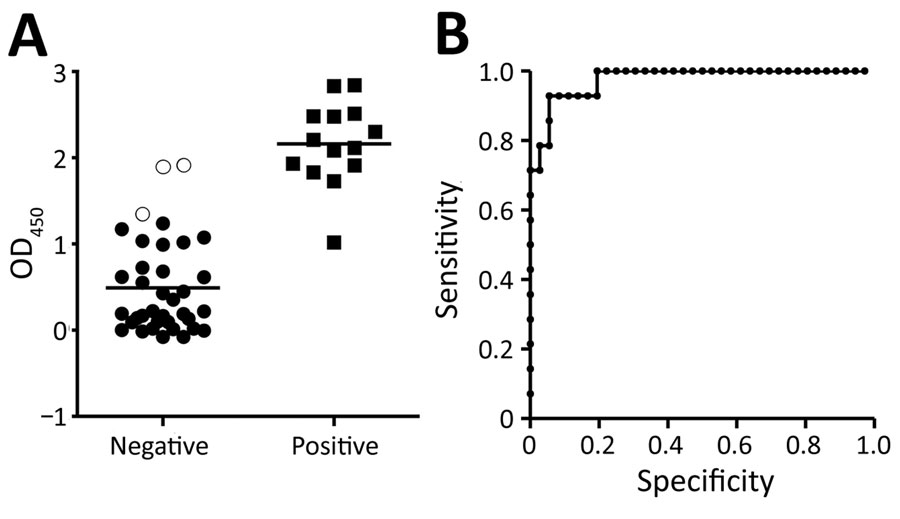Volume 26, Number 4—April 2020
Dispatch
Prevalence of Antibodies to Crimean-Congo Hemorrhagic Fever Virus in Ruminants, Nigeria, 2015
Figure 2

Figure 2. Prevalence of antibodies to Crimean-Congo hemorrhagic fever virus (CCHFV) in ruminants, Nigeria, 2015. A) Distribution of ELISA OD values for serum samples from cattle according to indirect fluorescent antibody test (IFAT) results, Nigeria. The OD at 405 nm for each serum sample at a dilution of 1:400 in the ELISA was plotted against serum samples from CCHFV IFAT antibody-positive and antibody-negative cattle. Three antibody-negative samples (open circles) were above the cutoff OD value in the ELISA and thus considered to be false positive in the ELISA. Other antibody-negative samples (solid circles) were also ELISA negative. Horizontal bars indicate mean OD values. Solid squares indicate IFAT-positive serum samples. B) Receiver operating characteristic (ROC) analysis of an IgG-ELISA specific for nucleoprotein of CCHFV. Area under the ROC curve was 0.9762, which indicates that the test has a good probability of distinguishing between CCHFV antibody–positive and –negative cattle. OD, optical density.
1These authors contributed equally to this article.